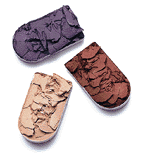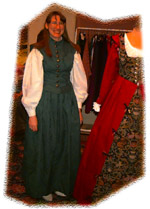This story starts with a convention. A science fiction convention. "What does a science fiction convention have to do with The Adventures of Priscilla, Queen of the Desert?" Well, not much. Yet.
Every Easter, a few thousand fen (fen: n. pl science fiction fan) get together at the Raddison South Minneapolis for Minicon. "What's Minicon?" It's possibly the biggest regional SF convention in the world. Some people call it the "Easter Worldcon". "What's a Worldcon?" For the answer to that question, look at the World Science Fiction Society web page. We're here to talk about Minicon.
Every year, MnStf (the Minnesota Science Fiction Society, pronounced "minn-stiff") gathers a cadre of volunteers. These volunteers work to turn the Raddison Hotel in Bloomington, Minnesota (a southern suburb of Minneapolis) into an environment where over 3000 people interested in science fiction can get together and have a good time.
(I'm simplifying a bit, and may not precisely hit things, but this should give you an idea of what sort of services and entertainment the convention provides. If you understand what a SF convention is like, jump down to the foundation bottles.)


The Hotel department makes an attempt to handle business arrangements with the now three hotels which house Minicon members, and allocate rooms for both official convention business and for members who wish a room at any of the convention hotels.
It's the job of the Parties department to stock the ConSuite (or hospitality suite... think of it as a place to sit down, relax, chat, nosh, get something to drink), and also allocate the prime real-estate at the hotel to people who request poolside cabanas and suites. By some arcane formula, these rooms are granted to people who plan to throw parties celebrating some aspect of science fiction (in 1996, we threw a Priscilla party, because we liked the movie), or to promote their own convention (there are a lot of other conventions).
The Programming department schedules panel discussions which run throughout the weekend. Almost any sort of literary and media science fiction discussion can be found somewhere during the convention. Hard-science programming tracks are also popular (particularly new fields of technology which may not at the moment be too terribly mature). Social, political, and ethical issues are often also included in program panels.
And of course, what would life be without shopping. The Art Show department... well, they run an art show. Items for display and for sale from a wide variety of artists around the world, related by varying degrees to science fiction. Painting and sculpture, from the rankest beginner to people capable of living off the income from their work.
If artwork isn't what you're looking for, the Dealers Room (run by, of course, the Dealers Room department) is a great place to find books, jewelry, costuming, craft supplies, and any number of other neat and potentially obscure items.
And last, but not least ('cuz it's what got us here) is the Extravaganzas department. These people plan and run Opening and Closing Ceremonies, dances, and other large events. Most importanly, they run a Masquerade.

"So what's the big deal about a Masquerade?"
Well, the format, for starters. A SF convention masquerade is sort of a judged fashion-show. The best of the best design extravagant costumes and present them with unparallelled flair.
A good masquerade costume is something that should look gorgeous (or at least recognizable) on stage from forty feet away, because that's where most people are going to be seeing it from. If it looks good close up, that's even better. Ideally, these costumes should show some science fiction or fantasy influence. Some people choose to recreate costumes from media and literature, others choose to create entirely new and fantastic costumes
A good masquerade presentation is coreographed to grab the audience's attention and at the same time show off the costume. Set to some sort of music or narration, these presentations range from a simple walk-through to complex dramatic or even silly sketches.
A good masquerade presentation is also short. Its purpose is to present the costume. 60 to 90 seconds is a pretty standard duration. Longer, and the audience starts to get bored (really, they do...).
